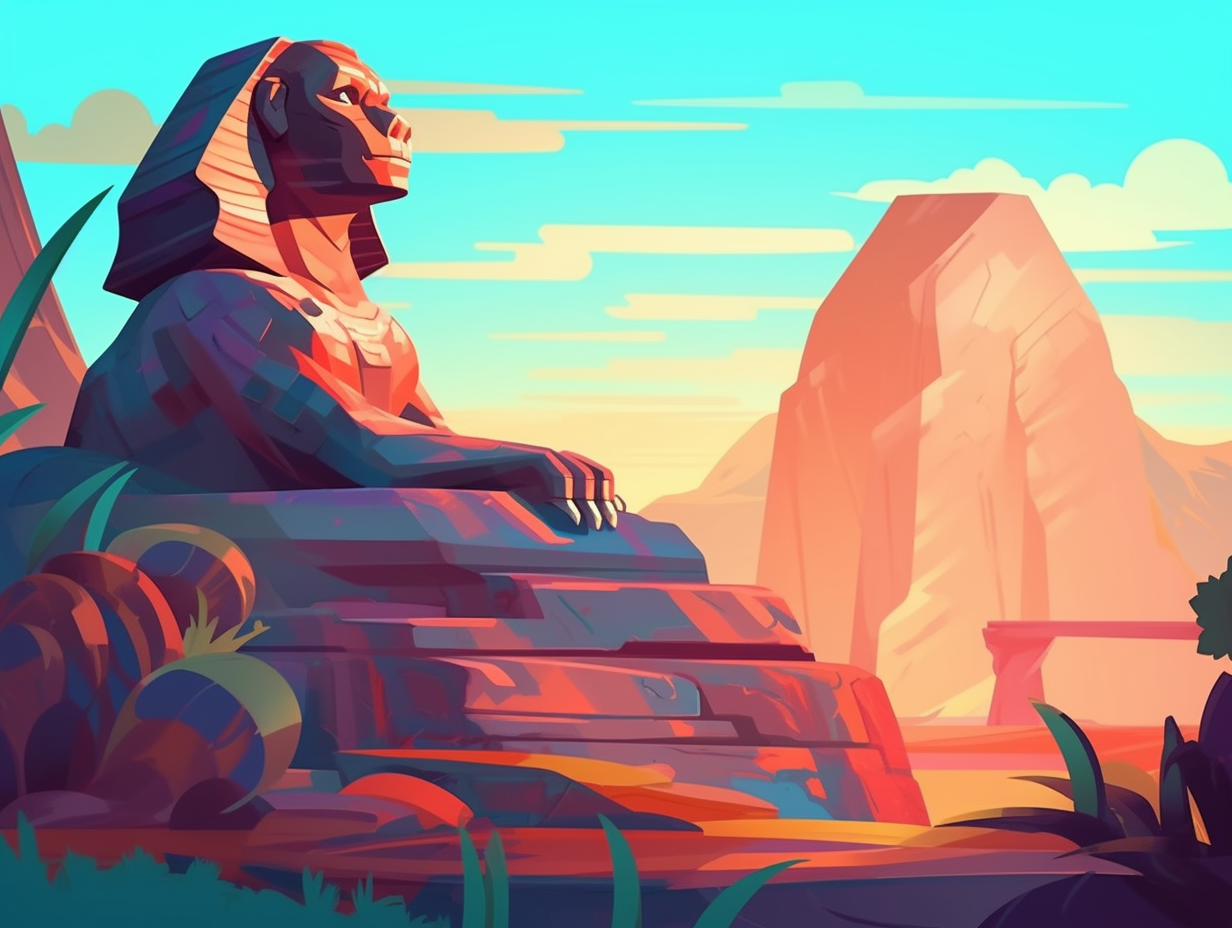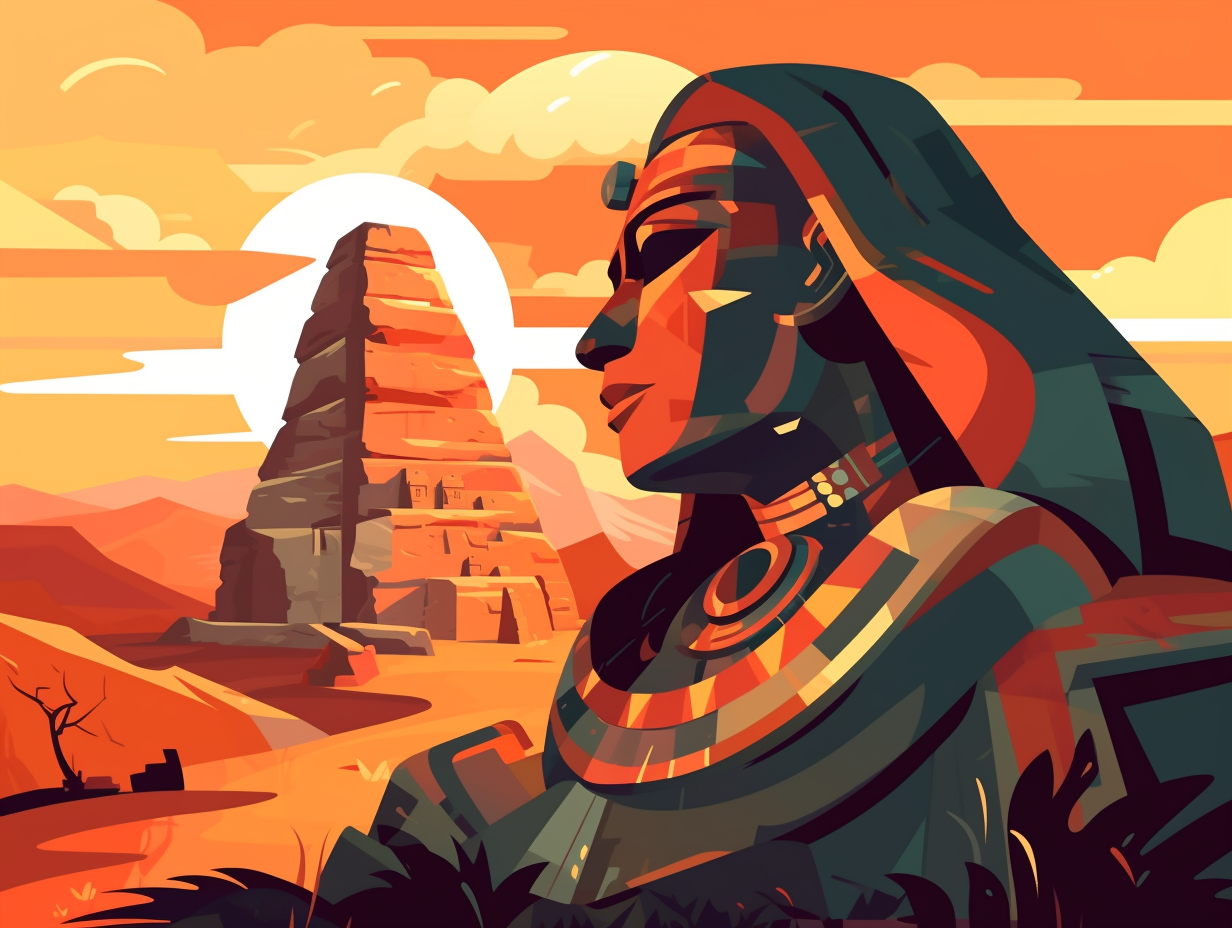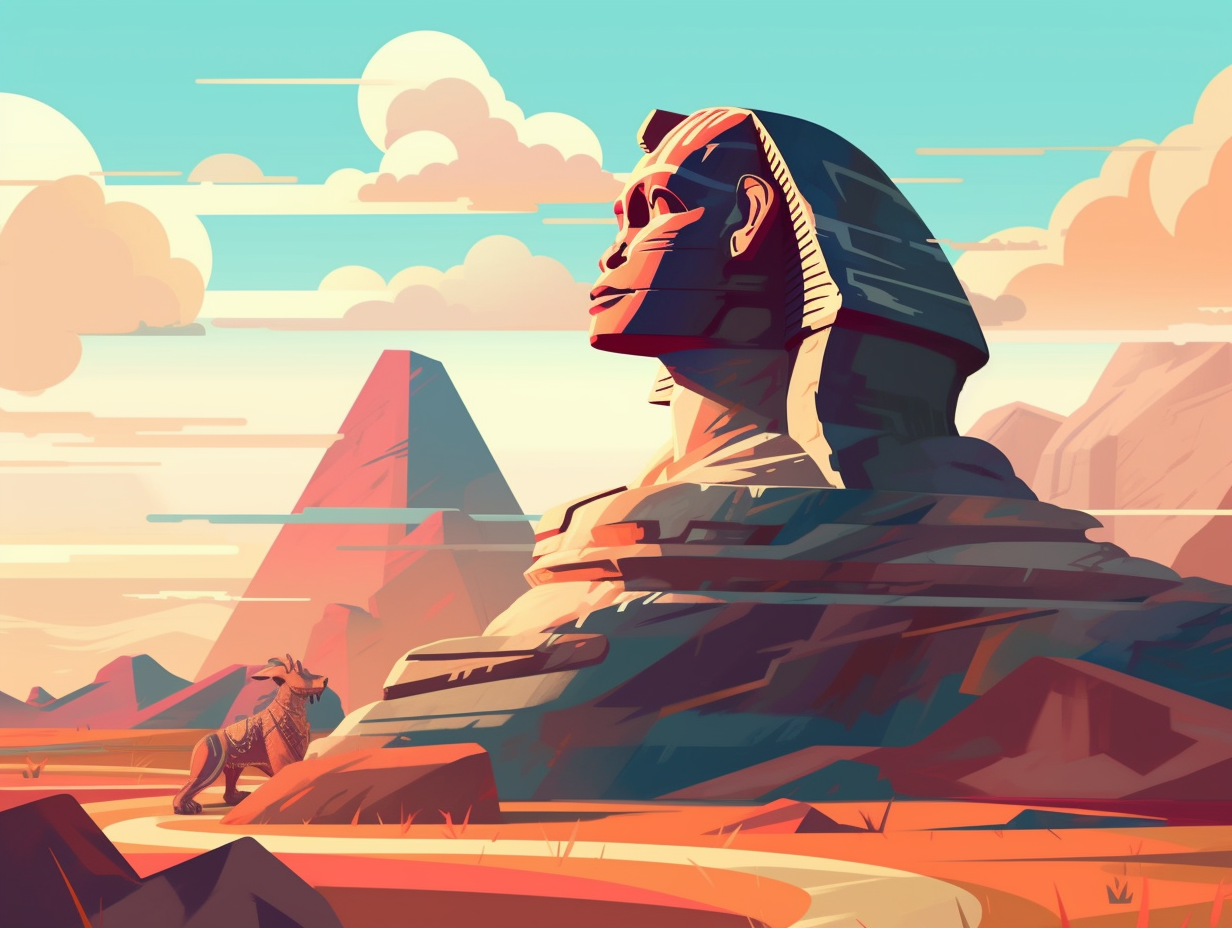Unveiling the Mysteries: Top 15 Fun Facts About the Sphinx You Never Knew!

1. Technicolor Sphinx
Once upon a technicolor dream, a stone-faced feline didn't know when to stop playing with its Crayola box: The Great Sphinx of Giza was actually painted with vibrant shades of red, blue, and yellow, with remnants of these hues still visible on the monument despite thousands of years of wind erosion and Mother Nature's artistic critiques.
Source => traveltriangle.com
2. Mysterious Stone Onion
As the ancient Egyptians would say, "Sphinxes are like onions – they may have you shedding tears, but they also have mysterious layers": The Great Sphinx of Giza, the oldest known monumental sculpture in Egypt, was initially just a humble yardang – a ridge of bedrock sculpted by the wind – before patient hands and creative minds transformed it into the enigmatic beast we know today. Stretching 73 meters from paw to tail, 20 meters in height, and 19 meters wide at its rear haunches, this feline giant continues to baffle and amaze, with its original purpose and form remaining tantalizingly elusive.
Source => en.wikipedia.org

Did you know the Eiffel Tower is quite the fashionista? Discover its colorful history and unique gradient design that keeps it looking chic every seven years. 🎨🗼
=> Fun Facts about The-Eiffel-Tower
3. Red Carpet-Ready
Step aside, modern makeovers: the Great Sphinx of Giza was rocking a bold red face way before it was trendy! Backstage at the ancient makeover salon, Pliny the Elder suggests the once vibrant face paint was a symbol of divine power and authority: This historic makeover has withstood the test of time, and while the current color scheme may not scream "red carpet-ready," the Sphinx continues to mesmerize the world as an iconic work of art and architecture.
Source => en.wikipedia.org
4. Sphinx's Subterranean Secrets
You know the Sphinx would kill it on the show "Storage Wars": a dusty statue with secret chambers and hidden passages tucked beneath its ancient stone skin! The underground world of the Sphinx is thought to contain mysterious rooms and maybe even connections to the nearby pyramids, but despite excavations and studies, its subterranean secrets continue to elude us.
Source => worldbook.com

5. Napoleon's Nosey Nonsense
Though Napoleon may have a "nose" for conquering countries, it seems the Sphinx's schnozzle snafu wasn't a punchline he was responsible for: Historical accounts and a painting by Frederic Louis Norden suggest the Sphinx's nose had already gone AWOL in the 15th century due to natural erosion or other acts of vandalism.
Source => egypttoday.com
6. World's Oldest Bouncer
Conjured by ancient Egyptian sorcerers to secure their Pharaoh's slumber party, the Great Sphinx proves to be the world's oldest bouncer (sans security t-shirt): In reality, it was likely built during the reign of Pharaoh Khafra to guard his pyramid or symbolize the sun god, Ra, and still stands proudly as one of Egypt's most iconic landmarks.
Source => khanacademy.org
7. One-Nostril Wonder
Here's a nose for news that would make even Pinocchio blush! It turns out the poor Sphinx has been stuck breathing out of one nostril for millennia: According to archaeological evidence, the sphinx's nose was intentionally broken off sometime between the 3rd and 10th centuries, with one theory suggesting that a Sufi Muslim extremist, Mohamed Sa'm al-Dahr, committed the act of vandalism and was executed for his crime — But alas, the exact reason for its removal remains a mystery to this day.
Source => en.wikipedia.org
8. Limestone Block Party
Did you hear about the ancient Egyptian sculptors' block party? They really carved it up: The Great Sphinx was crafted by roughly 100 people over three years using a single limestone mass, believed to have been built under Pharaoh Khafre's watchful eye. What a limestone of a feat!
Source => history.com
9. Subterranean Stash Myth
As much as we'd love to imagine ancient Egyptians pulling off the ultimate hide-and-seek spot, anxiously guarding the whereabouts of their top-secret subterranean clubhouse: the truth is, there's absolutely no evidence to suggest the existence of any hidden chamber or underground library beneath the majestic Sphinx of Giza. In other words, archaeologists have been forced to face the cold, stony truth that their dreams of discovering an ancient Egyptians' comic book stash might just be a New Age pipe-dream!
Source => en.wikipedia.org

10. Bad Hair Day
Ancient Egypt may have had the original "Bad Hair Day": The Great Sphinx of Giza's mane didn't erode away due to floods or rainfall, as the discredited water erosion hypothesis suggested. Rather, evidence indicates that the Sphinx and its temple were created after Khafre's Valley Temple and causeway, and a Sphinx cult didn't gain traction when work ceased prematurely, leaving us with the relatively mane-less monument we know today.
Source => en.wikipedia.org
11. Space-Saving Sphinx
Did the Sphinx's mom ever tell it to scoot over on the couch because it’s taking up too much room? Of course not, but some might say that the Sphinx is not as space-hogging as we thought: Contrary to popular belief, the mighty Sphinx is only 19 meters (about 62 feet) wide at its rear haunches and not the whopping 118 feet as some sources claim.
Source => en.wikipedia.org
12. Vandals' Nose Job
Noses come and go, but vandals have no chill: The Sphinx's missing schnozz was intentionally broken off, not by Napoleon's army or a Muslim extremist as some believed, but likely as an act of political or religious vandalism between the 3rd and 10th centuries, according to archaeologist Mark Lehner.
Source => en.wikipedia.org
13. Riddle-Spewing Offspring
Imagine this: the original "Wonder Woman" dating with the "King of the Jungle" and producing a prodigy who can't resist spewing riddles at anyone who crosses its path; what a splendid mix, wouldn't you say? Well, here's the real deal: The Sphinx in Greek mythology had a woman's face, a lion's body, and wings, and was famous for making people answer riddles or face a gruesome fate, with its most puzzling riddle being "What goes on four feet in the morning, two feet at noon, and three feet in the evening?"
Source => uen.pressbooks.pub
14. Pre-Nosebuster Era
You might say the Sphinx got "nosy" too early in the game, long before the "Nose-busters" even came into existence: It turns out that the iconic statue's absent schnoz was not the handiwork of Napoleon's troops or any other human intervention, as it had vanished centuries earlier, with some theories pointing to a Sufi Muslim's protest against idol worship in the 15th century as the possible cause.
Source => history.com

15. Divine Housekeeping Task
Next time you're buried in a heap of laundry, remember that even the Great Sphinx needed some housekeeping: Pharaoh Thutmose IV received a dream where the Sphinx promised him the throne of Egypt if he would just clear the pesky sand covering its body. Thutmose obliged, became king, and the Dream Stele between the Sphinx's paws tells this fascinating story, illustrating that even back in Thutmose's time, the Sphinx was ancient, revered, and a tad dusty!
Source => historyskills.com
Related Fun Facts




















